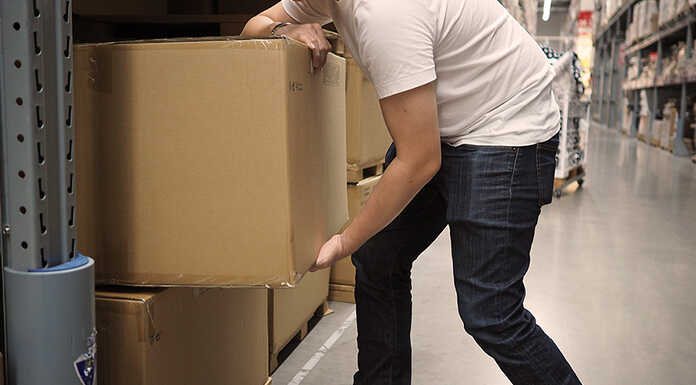Whether it’s lifting, pushing or pulling, the manual handling of materials produces stress on the musculoskeletal system that leads to hundreds of thousands of worker injuries annually. The Bureau of Labor Statistics consistently reports sprains, strains and tears as the most prevalent injury type resulting in days away from work. Luckily, there are many strategies you can employ to protect workers and reduce the frequency of costly workers’ compensation claims.
Training myths debunked
Body mechanics training and back belts have historically been a common response to the problem. Literature reviews and case-control studies have shown both to be ineffective at impacting injury rates. A widely-cited study sought to measure the impact of a robust training program for US postal distribution center workers. An intervention group of over 2,500 workers received two initial hour-and-a-half long, hands-on training sessions conducted by physical therapists. In addition, refresher sessions were administered throughout the study. Five and a half years after the program’s implementation, there was no statistically significant difference between the intervention group’s rate of low back injury and that of the control group of workers who did not participate in the training program.
Both back belts and body mechanics training share a common aim: to encourage workers to maintain a straight back while lifting. There is evidence that back belts can be successful at reducing back bending, and; yet they still fail to reduce rates of injury. This leads one to question the premise behind these interventions. Namely, that back bending during lifting results in a significantly higher risk of injury. Despite the conventional wisdom, the evidence challenges this assumption.
Stoop vs squat lifting, which is better?
A 2016 study used vertebral implants to measure the compressive forces on the spine for participants asked to lift items using both squat and stoop postures. The researchers found that the spinal loads did not substantially differ between the two techniques. A second study produced similar results when the participants were positioned over the item being lifted but found that squat lifting resulted in higher compressive force on the spine when lifting with the feet positioned behind the item. The researchers note that a likely explanation is the fact that in some situations squat lifting leads to a greater horizontal distance between the low back and the item being lifted. Squat lifting can also prompt workers to stand further from an item to allow it to clear the knees as they bend forward. In light of the evidence, it is recommended that workers be encouraged to assume the posture that is most comfortable for them.
Redesign high-risk tasks to prevent injury
Efforts focused on influencing body mechanics through the use of training and back belts should be redirected toward the approach that has long been validated as effective in the literature: The redesign of high-risk tasks. Here are some practical redesign solutions for reducing the injury risk associated with manual pushing, pulling and lifting.
- Eliminate, or reduce the frequency of the task. The number of manual handling injuries occurring within an operation is directly related to the frequency with which workers are exposed to these manual tasks. Outsourcing to a third party, robotic palletizers, vacuum lifters and requiring items above a certain weight to be mechanically handled are common solutions.
- Reduce the weight lifted or force required. The more force required to lift, push or pull, the greater the stress on the low back and shoulders. Weights can be reduced by utilizing smaller containers or obtaining materials packed in smaller quantities. The force required to push or pull carts can be dramatically reduced by increasing wheel size and/or using wheels made of a harder material. Doubling the diameter of a cart’s wheels halves the force required to get it moving and keep it moving. Replacing hard rubber wheels with a denser material such as polyurethane can reduce the force by more than 80 percent.
- Eliminate below-the-knee & over-the-shoulder lifts. The postures required for these lifts increase the force on the low back and often result in the load being held out further from the body, which causes additional stress to the muscles and spinal discs. Solutions include elevating pallets by placing spares under the one being worked from, using pallet carts or lifters, using scissor lift carts and storing heavier items at the knee to chest level.
- Reduce the need to reach out from the body. Every inch the load is extended out from the body increases the force on the low back. Move obstacles out of the way so they don’t need to be reached over and avoid manual lifting of large awkward items that can’t be held close to the body.

















